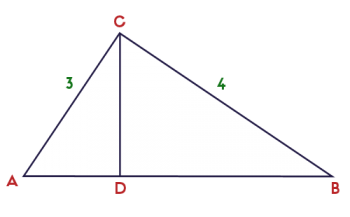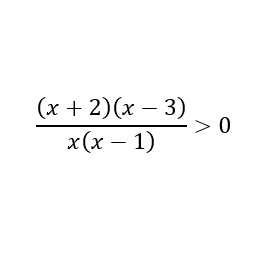Ask Professor Puzzler
Do you have a question you would like to ask Professor Puzzler? Click here to ask your question!
"How do you add 8 cubic yards and 8 cubic feet?" ~Anon.
Since you're asking the question, you're probably deduced that you can't simply add 3 and 3 to get 6. If you did that, you'd then have the question of whether the units in the result are cubic yards or cubic feet. The simple rule is that you can't add two quantities which have different units.
If two units are the same type of unit (for example, they're both distances, or they're both times), then you can rewrite one of them so they have the same unit, and then you can add them.
In this case, both units are volumes, which is an amount of 3-dimensional space something takes up. We want to either convert 3 cubic yards into cubic feet, or we want to convert cubic feet into cubic yards. I'm going to convert cubic yards into cubic feet.
If you have 8 cubic yards, you can picture that as a cube. Conveniently, 8 = 23, so you can picture it as a cube that has a width of 2 yards, a height of 2 yards, and length of 2 yards. Length times width times height = 2 yards x 2 yards x 2 yards = 8 yards3.
But we know how to convert 2 yards into feet; there are 3 feet in a yard. So it turns out that our cube's dimensions are 6 feet by 6 feet by 6 feet. So Length times width times height = 6 x 6 x 6 = 216 feet3.
Now that we have written both units in cubic feet, we can add them: 216 feet3 + 8 feet3 = 224 cubic feet.
That answers your question, but we've really only touched the surface of converting units - you can find a more detailed study unit here: Conversions factors and unit conversions.
"I can find the LCM of two numbers (like the LCM of 32 and 20 is 160), but how do you find the LCM if there are variables (like 32x2y and 20y3)?"
Before addressing your question, I'd like you to think, for a minute, about how you find the LCM of two numbers. When you were in elementary school, you may have been taught to list multiples until you find one that matches:
32: 32, 64, 96, 128, 160
20: 20, 40, 60, 80, 100, 120, 140, 160
This is fine, and is probably one of the easiest ways for children to visualize what it means that a number is the least common multiple. But since you're talking about variables, you're ready to approach LCMs in a slightly different way. If you already do LCMs the way I'm going to show below, please bear with me while I review it.
When I want to find the LCM of two numbers, I generally start by doing a prime factorization of the two numbers. You can use a factor tree, or whatever method you've learned. I get the following result:
32 = 25
20 = 22 · 5
With this factorization, finding the LCM is a cinch. First, the LCM must have both 2 and 5 as factors. Why? Because it's a multiple of numbers that have 2 or 5 (or both) as factors. So I can say:
LCM = 2? · 5?
What are those question marks for? They're there because even though I know the LCM has both 2 and 5 as factors, I haven't figured out what the exponents of those factors are. It's actually pretty simple to figure out, though; we compare the exponents of each factor in the two prime factorizations, and we take the larger exponent. Thus, since we have 25 and 22, 5 is the bigger exponent, and since we've just got 51 in the second factorization, that's the exponent we'll use for 5.
LCM = 25 · 51 = 160
Now, maybe you think that process is a lot slower than the other process. Maybe. Or maybe it just seemed that way because I was explaining each step. On the other hand, if you have the numbers 1008 and 1012, finding the LCM by the elementary method is going to be brutal (the result is 255024, and you'll have to list out 253 multiples of 1008 and 252 multiples of 1012).
But whether or not it's "easier" isn't actually the point. The point is that this method helps us answer your question about LCMs involving variables.
What are the prime factorization of 32x2y and 20y3?
32x2y = 25 · x2 · y
20y3 = 22 · 5 · y3
So the LCM has to contain the factors 2, 5, x, and y. And which exponents do we use? The higher exponent for each factor:
LCM = 25 · 5 · x2 · y3 = 160x2y3.
As a bonus, this method also allows us to find the LCM of some polynomial expressions. For example, find the LCM of x2 + 2x + 1 and x2 + 3x + 2. As with the previous problems, we begin by factoring:
x2 + 2x + 1 = (x + 1)2
x2 + 3x + 2 = (x + 1)(x + 2)
What is the LCM? It's (x + 1)2(x + 2)
What is the "altitude to the hypotenuse," and how do I find its length, if I know the lengths of two legs?
To answer this question, consider the diagram below. I show a triangle with angles A, B, and C, and right angle at C. The segment CD is the altitude to the hypotenuse. An altitude is a line segment that is perpendicular to a side, and passes through the opposite vertex. Thus, the altitude to the hypotenuse is perpendicular to the hypotenuse, and passes through the point C.

For this example, I gave the legs lengths 3 and 4. I did this so it would work out simply: the hypotenuse is 5 (because 32 + 42 = 52).
The question is, how do we find the length of CD? To figure this out, it is helpful to notice that all three triangles are similar.
ΔABC ~ ΔACD ~ ΔCBD
From this, we know that the ratio of the longer leg to the hypotenuse is the same for each triangle.
In the largest triangle, that ratio is 4/5. In the smallest triangle, that ratio is CD/3.
Thus, 4/5 = CD/3, which leads to CD = 12/5.
Twelfth grader Monesa from Pakistan writes, "A geometric sequence has first term 1/9 and common ratio 3. (i) Find the fifth term. (ii) Which is the first term of the sequence which exceeds 1000? I've found (i) as 9, but cannot do (ii) without trial and error. I think it may have something to do with logarithms, but can't think how to do it. Any help would be appreciated"
Hi Monesa, you absolutely can use logarithms to solve the second part of your question. Here's how that looks. First, we write a non-logarithmic equation just like you would for any geometric sequence problem.
1/9 = 1000.
Strictly speaking, we want the term to be greater than or equal to 1000, but for now we're going to write it as an equation; this will give us the minimum possible value of n.
Multiplying both sides of the equation by 9 gives:
3n - 1 = 9000.
Here's where logarithms come into play. If you've studied logarithms at all, you know that a log is actually just an exponent. You also have been taught that:
ab = c and loga c = b are equivalent equations. So we can take your exponential function above and rewrite it as a log equation:
log 3 9000 = n - 1
Now, your calculator probably won't calculate a log in base 3, which is what you have here. But we have a nice log property called the "Change of Base Property" - it says:
log a b= (log c b)/(log c a)
In other words, we can change the base to anything we want. What base do we want? Base ten, because our calculators will handle base ten logarithms:
log 3 9000 = (log 9000)/(log 3) = 8.29...
Wait a minute! That gives n = 9.29! That doesn't make sense; how can you have term number 9.29? The answer is, you can't. In a geometric sequence, the term number has to be an integer. But we know that it has to be at least 9.29, so the smallest integer value n could be is 10. The tenth term is larger than 1000.
Can we check that? Sure! 1/9 · 39 = 2187, and 1/9 · 38 = 729. Sure enough, the 9th term doesn't quite make it to 1000.
How do you solve an inequality which looks like the following?

So we first need to find the points at which the different factors change sign, because those are the points at which the sign of the entire expression changes. We find these points of interest by setting each factor equal to zero (after all, the point at which the factor is zero is the point at which the factor is changing sign).
x + 2 = 0
x = -2
x - 3 = 0
x = 3
x = 0
x - 1 = 0
x = 1
So our points of interest are x = -2, x = 0, x = 1, and x = 3.
I listed those in ascending order; which will make it a little easier to finish up the problem.
If x < -2, then all the factors are negative, and the result is positive.
If -2 < x < 0, then x, (x - 1) and (x - 3) are negative, giving a negative result.
If 0 < x < 1, then (x - 1) and (x - 3) are negative, giving a positive result.
If 1 < x < 3, only (x - 3) is negative, giving a negative result.
If x > 3, none of the factors are negative, and the result is positive.
Thus, the solution is x < -2 or 0 < x < 1 or x > 3

